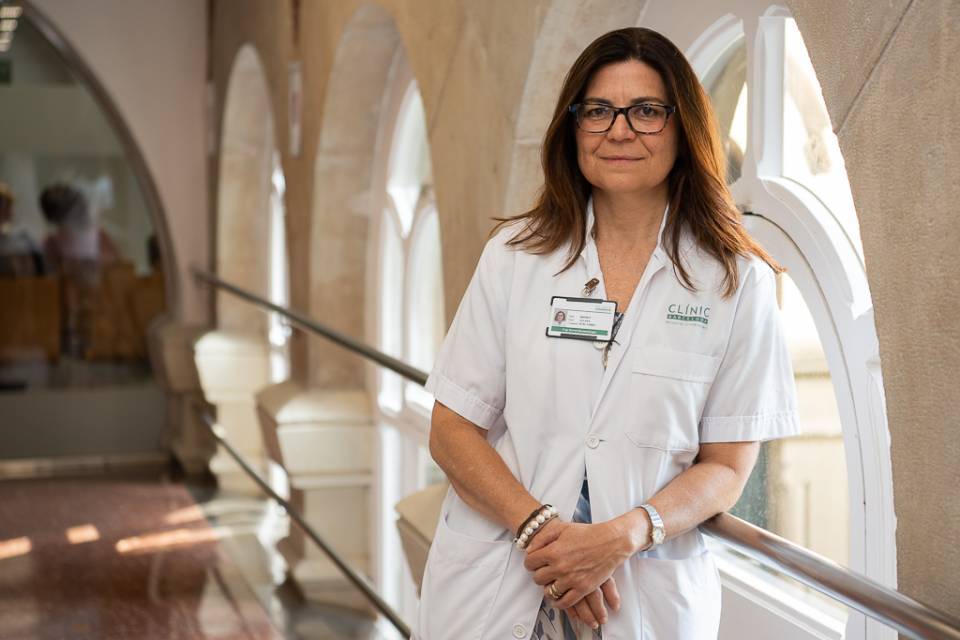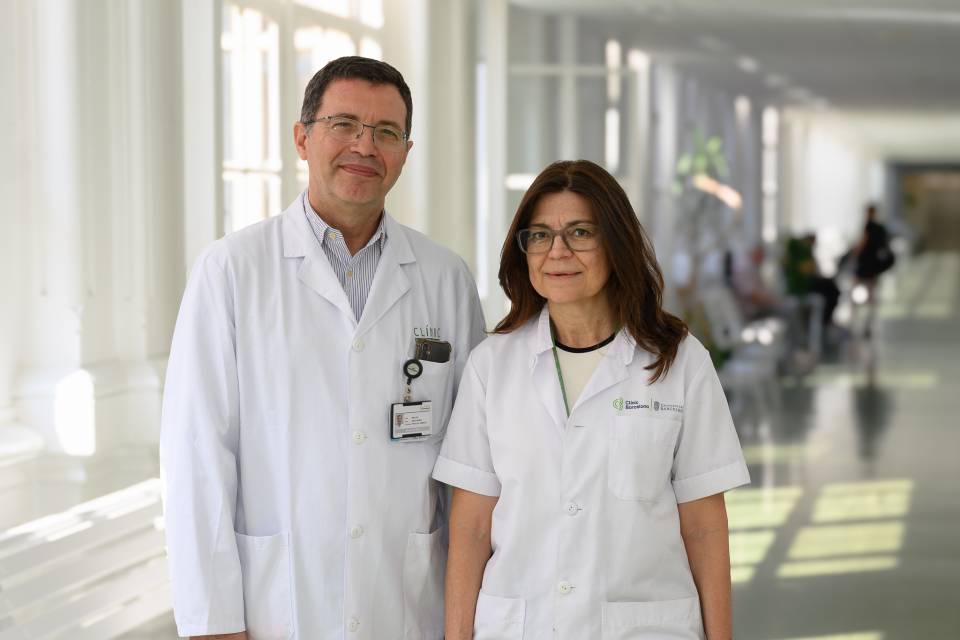Skin Cancer tests and diagnosis
Different techniques are employed to diagnose skin cancer, for example, dermoscopy and tumour biopsies. A diagnosis of the type of skin cancer and tumour is essential for deciding the best treatment and establishing the prognosis for each case.

Dermoscope. A dermoscope is a tool used to perform a direct, and painless, examination of the skin by observing the tumour’s structure. In most cases, dermoscopes can provide a very accurate diagnosis of skin tumours.
Other imaging techniques used to assess skin tumours are:

Digital dermoscopy and total-body mapping. These techniques detect any changes or new lesions during monitoring. This technique is especially indicated in patients with a history of skin cancer who have a lot of pigmented skin lesions. It consists in recording and analysing photographs of the patient’s skin and moles with microscopes adapted to work in computerised systems.

Reflectance confocal microscopy. This is a non-invasive, painless technique with super-resolution at a cellular level. It is used to diagnose complex lesions or rule out skin cancer in cases where the above techniques are inconclusive.

Skin ultrasound. Ultrasound is used to study the size and borders of skin tumours in order to guide treatment.

Tumour biopsy. A biopsy is performed when a malignant tumour is suspected. Biopsies are quick, minor surgical procedures that require local anaesthesia. Sometimes the entire tumour is removed for diagnosis, while in other cases it is first analysed by means of a partial biopsy.
Skin biopsy
If, after examining the skin, the doctor considers the lesion could be skin cancer, they will always try to remove the whole lesion, where possible; alternatively, if it is very large, they will take a sample for examination under a microscope. This is known as a skin biopsy.
There are many ways of doing a skin biopsy. The doctor will base their choice of method on the size of the affected area, its location on the body and other factors. All biopsies are prone to leaving at least a small scar. Additionally, the different methods can leave different types of scar. You should therefore ask your healthcare team about this before the biopsy.
Skin biopsies are carried out using a local anaesthetic (a medicine that blocks the pain) which is injected close to the lesion with a very small needle. You will probably feel a small pinch and a slight burning sensation as the anaesthetic is injected, but you shouldn’t feel any pain during the biopsy.
In some cases, biopsies may need to be performed in other areas of the body apart from the skin. For example, if diagnosed with melanoma, the doctors may want to take a biopsy of nearby lymph nodes to discover if the cancer has spread to them.
Sentinel lymph node biopsy
For cases of melanoma, when necessary, a sentinel lymph node biopsy is carried out to determine tumour size and whether the disease has spread, and also to establish the treatment options. The nearest lymph nodes to the tumour site are called the sentinel nodes (because they are like “watchmen” who warn of the tumour’s presence).
To find the sentinel node (or nodes), a specialist in nuclear medicine injects a small amount of radioactive substance in the area near the melanoma. Once the substance has reached the area of the lymph nodes closest to the tumour, a special camera is used to see whether it has accumulated in one or more sentinel lymph nodes.
After marking the radioactive area, the patient undergoes surgery and a purple dye is injected in the same site as the radioactive substance. A small incision is then made in the marked area and the lymph nodes are inspected to discover which has (or have) been stained with the dye. These sentinel lymph nodes are removed and examined under a microscope.
If there are no melanoma cells in the sentinel nodes, then there is no need to perform any further lymph node surgery, since it is very unlikely that the melanoma could have spread beyond this point. If melanoma cells are observed in the sentinel node, then remaining lymph nodes in the given area will be removed and examined under a microscope. This is known as lymph node dissection.
If a lymph node neighbouring a melanoma is abnormally large, then a sentinel lymph node biopsy will probably not be required – a biopsy will simply be carried out on the swollen node.
Laboratory tests on biopsy samples
All biopsy samples are sent to an analytical laboratory where a specialist (pathologist) uses a microscope to check for the presence of melanoma cells. Skin samples are often sent to a dermatopathologist, an expert in making diagnoses from skin samples.
If the specialist cannot be certain whether or not melanoma cells are present just from microscope observations, they will carry out specific tests to try and confirm the diagnosis (immunohistochemistry (IHC), fluorescence in site hybridisation (FISH) and comparative genomic hybridisation (CGH)).
In samples that do contain melanoma cells, the pathologist will assess important characteristics such as tumour thickness and what portion of cells are dividing quickly (mitotic index). These characteristics help determine the stage of the melanoma, the treatment options and prognosis.
Biopsy samples taken from patients with advanced melanoma are tested to learn whether the cells present mutations in certain genes, e.g., the BRAF gene. Approximately half of all melanomas have mutated BRAF genes. Some of the latest medicines used to treat advanced melanomas are probably only effective if the cancer cells feature BRAF mutations. Therefore, this test is important as it helps establish the treatment options.
Substantiated information by:


Published: 20 February 2018
Updated: 20 February 2018
Subscribe
Receive the latest updates related to this content.
Thank you for subscribing!
If this is the first time you subscribe you will receive a confirmation email, check your inbox


